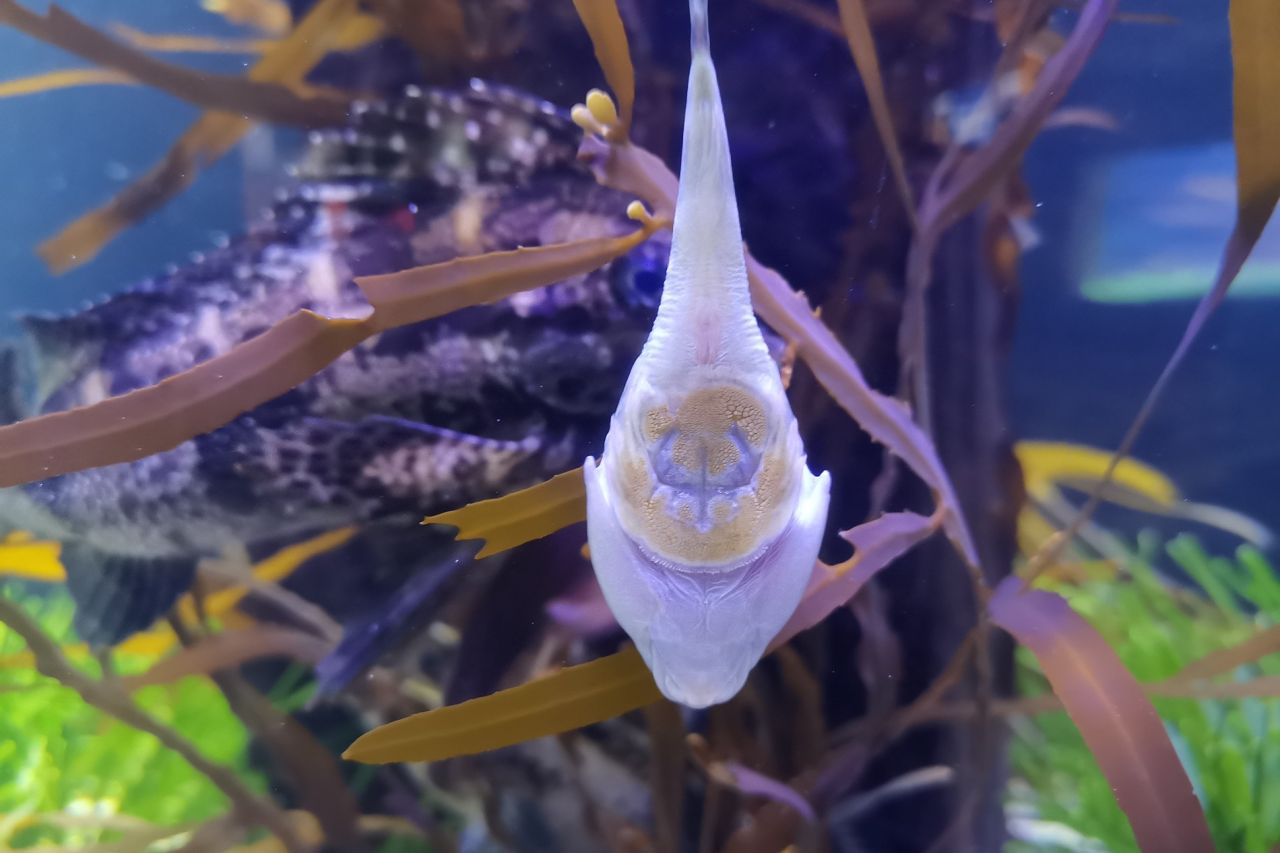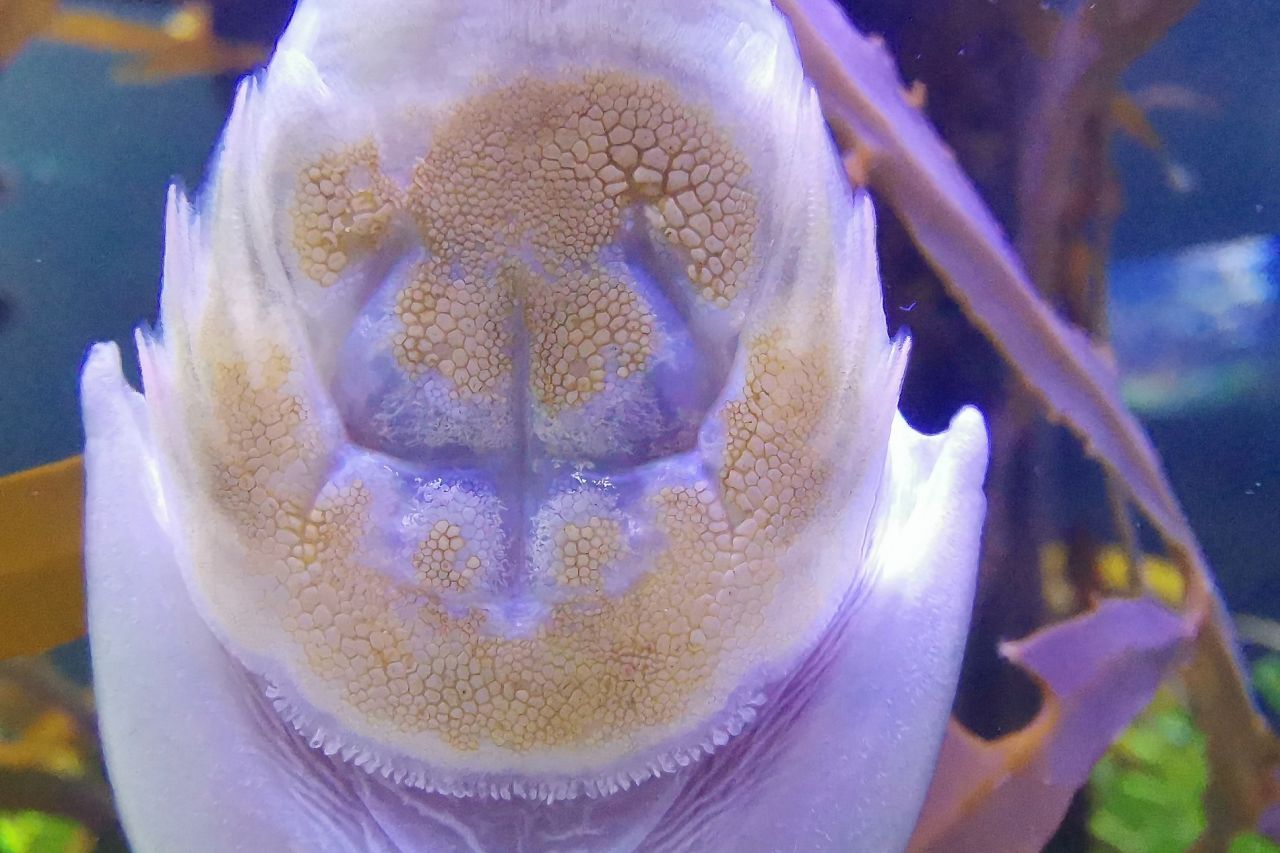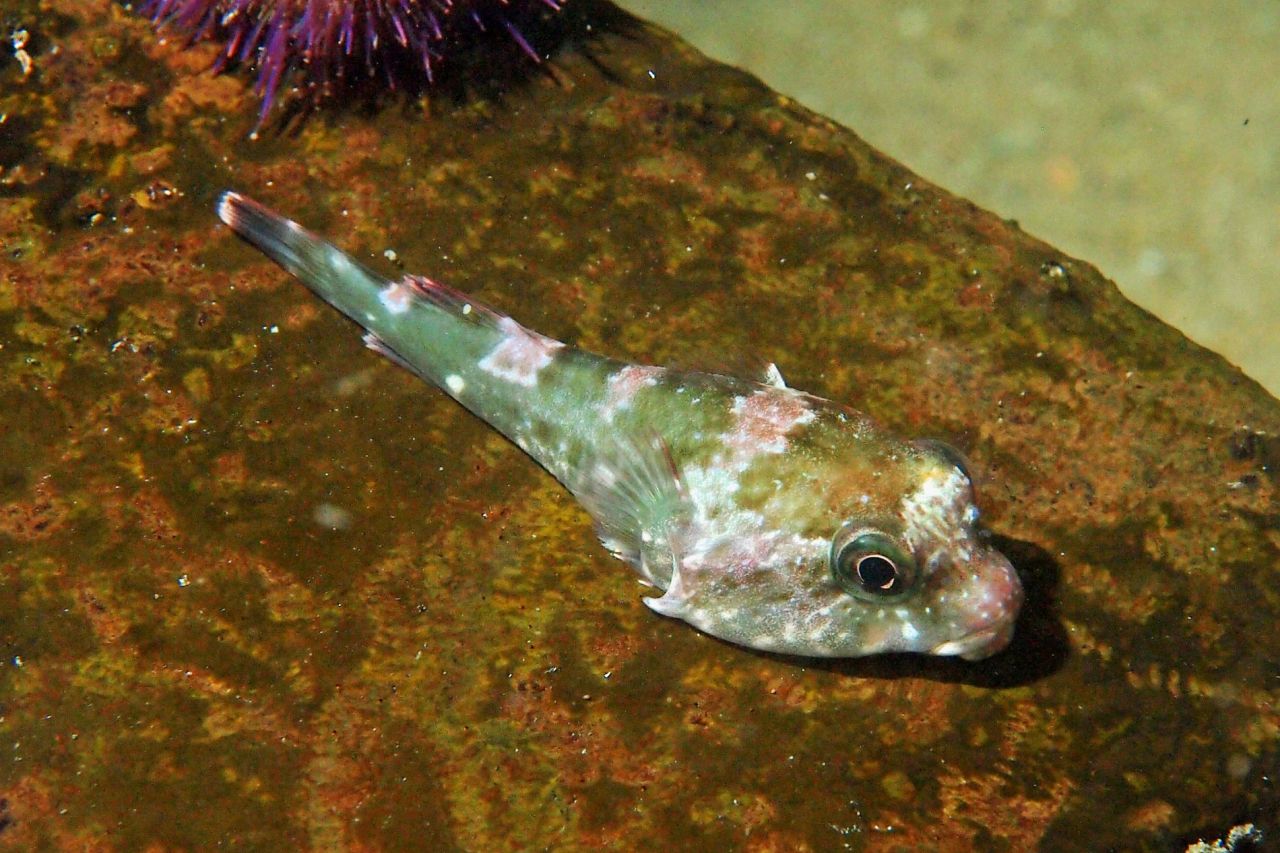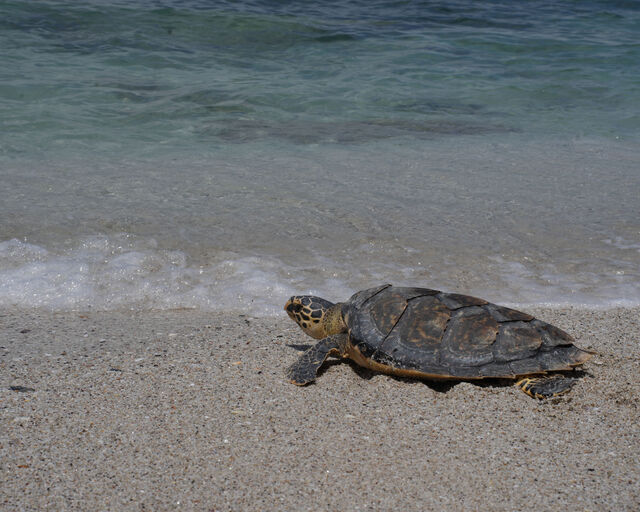Clingfishes are a family of small fish found around the world in tropical and temperate seas, from shores to the deep ocean, and even in some rivers! What makes them unique is a special structure on their chest called a "sucking disc", that they can use to cling onto rocks, seaweeds and other objects to easily endure strong currents, and even being battered by waves.

This sucking disc is actually more similar to the footpads of geckos than to the "suckers" used by other sea animals - these modified pelvic fins are covered in microscopic hairs called setae which create a static electricity charge that helps the fish stick even more firmly to the surface than one would expect based on the small size of the disc, and prevents water from getting under the edges of the "cup".

In most fish, the pair of pelvic fins (the small fins usually seen below the chest) are used either for stabilisation when swimming at slow speeds or "hovering", or are used to assist rapid braking or sharp turns in fast swimming species. Because clingfishes rely on neither speed nor the need to hover, giving up "classic" pelvic fins for a sucking disc is a great evolutionary strategy.
The clingfish is actually well adapted to sucking, but scientists are learning to make better tools and equipment based on their biology. Note - the video below contains an experiment on a dead animal, it may not be suitable for everyone:
They are predators and use a specialised "fang" to pry limpets off of rocks, and then swallow them whole. Any shore fisherman can tell you that prying limpets off rocks is no easy task - especially in the waves! Small rocksuckers that do not yet have the strength to pry away limpets primarily eat small crustaceans.
As the wonderful diagram of Stobbs indicates above, the way rocksuckers hunt is quite ingenious:
- First, the fish will mull around looking for the ideal limpet (this is where being able to stick to a rock becomes handy)
- When it spots a limpet that loosens its seal briefly to send out a tentacle to look for food, the rocksucker lines itself up to strike.
- It watches the limpet for a few seconds to be sure...
- And then the rocksucker strikes! It comes in at an angle, covers the limpet with its mouth and inserts its fang-like upper teeth under the far edge of the limpet's shell. Because it came in so quickly, it used its momentum to swim "past" the limpet, and lever it off the rock in the process - swallowing it whole immediately.
- Gloat about being the coolest little fish (not pictured above)
We highly recommend reading the whole paper to learn even more about the habits of the rocksucker - R.E. Stobbs (1980) Feeding Habits of the Giant Clingfish Chorisochismus Dentex (Pisces: Gobiesocidae), South African Journal of Zoology.
The rocksucker is what is informally known as a "cryptic" species. This means that its colouration and patterns vary to suit its environment, ranging from greens and browns to red and white, and it can be very easily confused with other species, like the smaller and equally cryptic chubby clingfish (Apletodon pellegrini) also found in South African waters.

If you'd like to see a rocksucker for yourself - hop on over to the Two Oceans Aquarium and see if you can find this cryptic clingfish in our Diversity Gallery.



